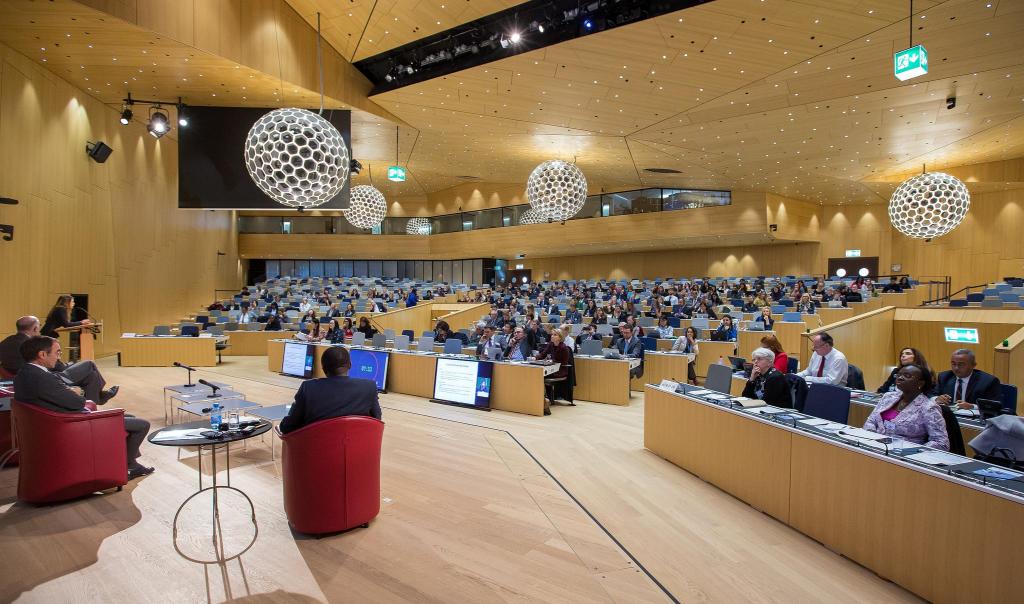While the potential implications of antimicrobial resistance for public health have been well understood since the earliest stages of antimicrobial invention and use, it is only recently that AMR started to be considered as a fundamental social threat, whose magnitude and complexity have been described as comparable to the challenge posed by climate change. By its very nature, in fact, antimicrobial resistance is driven by a plurality of factors, including inappropriate use of antimicrobials in public health, husbandry and agriculture; lack of access to vaccines, health services and sanitation; and the presence of antimicrobial residues in soils, crops and water. Therefore, tackling it will require a significant degree of multi-sectoral cooperation, in line with the increasingly popular concept of One Health.
The recent political declaration of the high-level meeting of the United Nations General Assembly on antimicrobial resistance, held on 21 September 2016 in New York, attests to the growing attention paid to AMR outside of the health sector, and to its transition to the highest spheres of politics. Furthermore, it emphasises the need for coordinated efforts to be undertaken at all relevant levels: it requests the UN Secretary-General to establish an ad hoc interagency coordinating group to provide practical guidance, while also reaffirming country commitments to the development of multi-sectoral action plans, programmes and policies; the mobilisation of funding and human resources; and the support to education and capacity-building.
It is in this context that, on 25 October 2016, the World Intellectual Property Organization (WIPO), the World Health Organization (WHO), and the World Trade Organization (WTO) convened their sixth Joint Technical Symposium. The event was conceived as a practical follow-up to the high-level meeting of the General Assembly, deepening the discussion about the intersections of health, intellectual property and trade. Three main questions were explored, namely: (i) how to foster access to and appropriate use of antibiotics; (ii) how to promote new business models and approaches to antibiotic innovation; and (iii) how to mobilise trade policy (and trade-related intellectual property rights) in support of antimicrobial access and stewardship.
As highlighted in the keynote speech of Hala Audi (Head of the Review Team for the United Kingdom’s Review on Antimicrobial Resistance), as well as during the welcoming remarks of Francis Gurry (Director General of WIPO), Roberto Azevêdo (Director General of WTO) and Keiji Fukuda (WHO Special Representative for AMR), it is important to realise that these questions cannot be answered in isolation, as AMR calls for a delicate balance between the different (and sometimes conflicting) goals of boosting innovation, increasing access and ensuring stewardship. First, stimulating the development of new antibiotics to strengthen the antibiotics pipeline will require policies to delink product prices from R&D costs, as current models can have negative implications for access and appropriate use. Second, lack of access to antibiotics in many countries must be dealt with without incurring in the opposite problem of incentivising indiscriminate use or use of old and ineffective products: for example, it is essential that WTO efforts to facilitate trade in medicines, including through the 2005 Amendment to the TRIPS agreement, do not restrict the rights of governments to regulate the appropriate use of antibiotics. Finally, the need for better diagnostics, more stringent regulations for prescription and distribution, and adequate education and training cannot ignore the role of innovation and access in improving lives and promoting development. Taken together, these considerations reflect the above-mentioned need to use the concept of One Health to harmonise and integrate the work of the different agencies and sectors, promoting a “whole-of-society” approach to antimicrobial resistance.
Beyond the political declaration of the General Assembly, the renewed attention paid to the issue at the G20 level, as well as the adoption of the WHO Global Action Plan on AMR (GAP-AMR) in 2015, represent encouraging signs of this increasingly interconnected approach. Nevertheless, as stressed by Dr. Keiji Fukuda in his address, this ‘vertical transition’ must be translated into a daily working reality of cooperation at the horizontal level. From such a perspective, it is crucial to draw examples from effective procurement and financing models developed for other health threats, such as HIV/AIDS, malaria and tuberculosis, and to ensure that UN specialised agencies and related organisations continue to work together to define common strategies and approaches towards the broad range of factors shaping AMR.
Photo: WIPO


